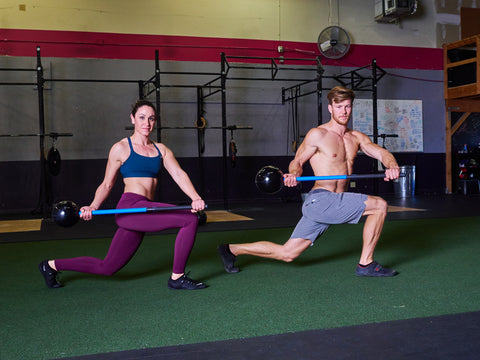
Rotation is part of all functional movements (even when it’s not obvious). Owning and controlling how your body moves in the transverse plane (rotation) is crucial to not only excelling in your sport or activity, but preventing being sidelined. If you need proof, take a look at how many non-contact ACL and rotator cuff injuries there are every year in sports! 🔑In order to own and control movement in the transverse plane, you need to train in the transverse plane! That makes sense, right!?
So if you want to train rotation, it’s imperative to know and understand which joints allow movement in the transverse plane - your feet, hips, and thoracic spine. These areas need to have optimal mobility, and then the muscles around these areas need to be able to control that mobility through the entire range of available motion. If you don’t own the range, your body will avoid it, finding other, more comfortable compensatory patterns to move through.
Here’s a quick way to screen your rotation mobility. Stand with your feet under your hips and your toes pointed forward. You should be barefoot. Keep your arms at your side and rotate as much as you can to the right, keeping your hips over your feet. If your mobility is normal, your hips should be about 60 degrees from where they started, and the area between the tops of your scapula should be rotated about 50 degrees more than your hips.
Now repeat this on the other side. Where you end up will tell you one of two things. One, this may be your full range of motion, meaning, your muscles, or joints will not allow you to move any more due to either muscle length deficits or joint mobility deficits. Or, two, this is as far as you are able to control your movement. You can check that by having either a friend see if they can rotate you a little more, or by using a wall, for example, to see if you can pull yourself into more rotation without compensating by shifting your hips, or moving your feet.
Mobility work if necessary followed by working in the new range of motion. Training in the new range allows the nervous system to start mapping the motor sequences. This mapping ultimately allows you to consistently function with the new range of motion. This is how mobility and flexibility stick! Once you have the mobility and are able to control it, start training with more speed, or increased resistance. If you play a sport, incorporate rotational movements that mimic the movements of your sport.
Check out the videos below to upgrade your rotation training game.
Core and Rotational Strength w/ Coach Anthony Eisenhower
Standing Twist: Rotational Warm-up
Core Hammer Mobility Workout and Rotational Strength
Dr. Santo Riva PT, DPT, OCS , founder of Victory Performance & Physical Therapy, is a board-certified orthopedic clinical specialist, sports physical therapist and adjunct instructor of clinical physical therapy at the USC Division of Biokinesiology and Physical Therapy.